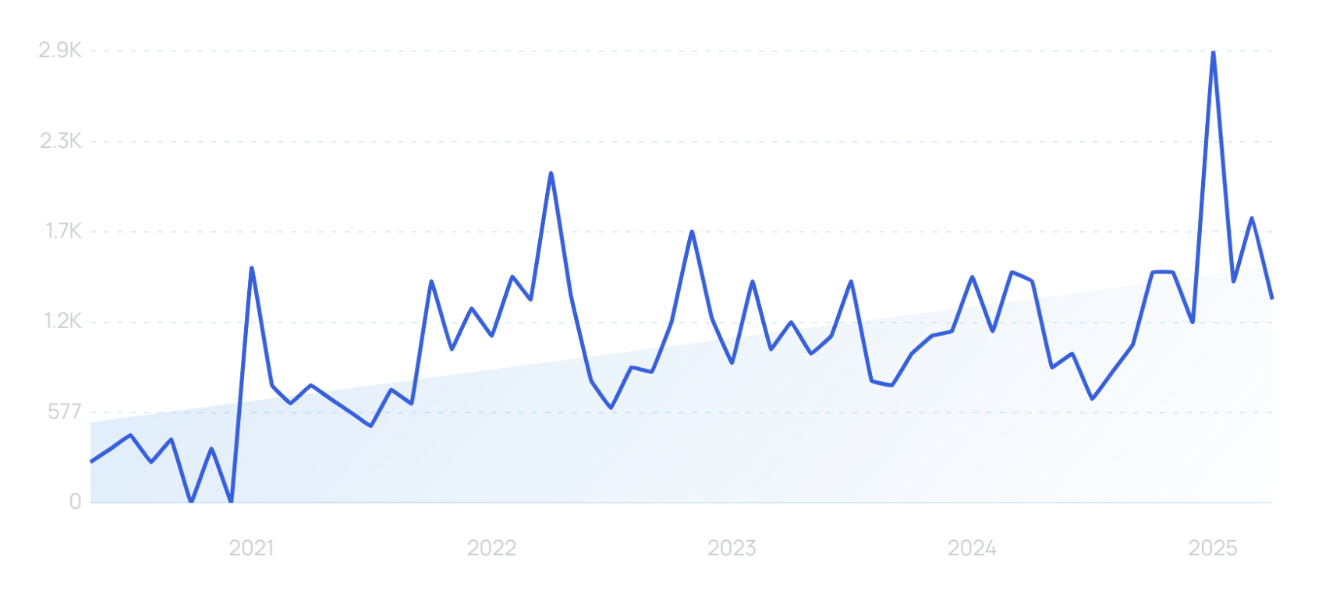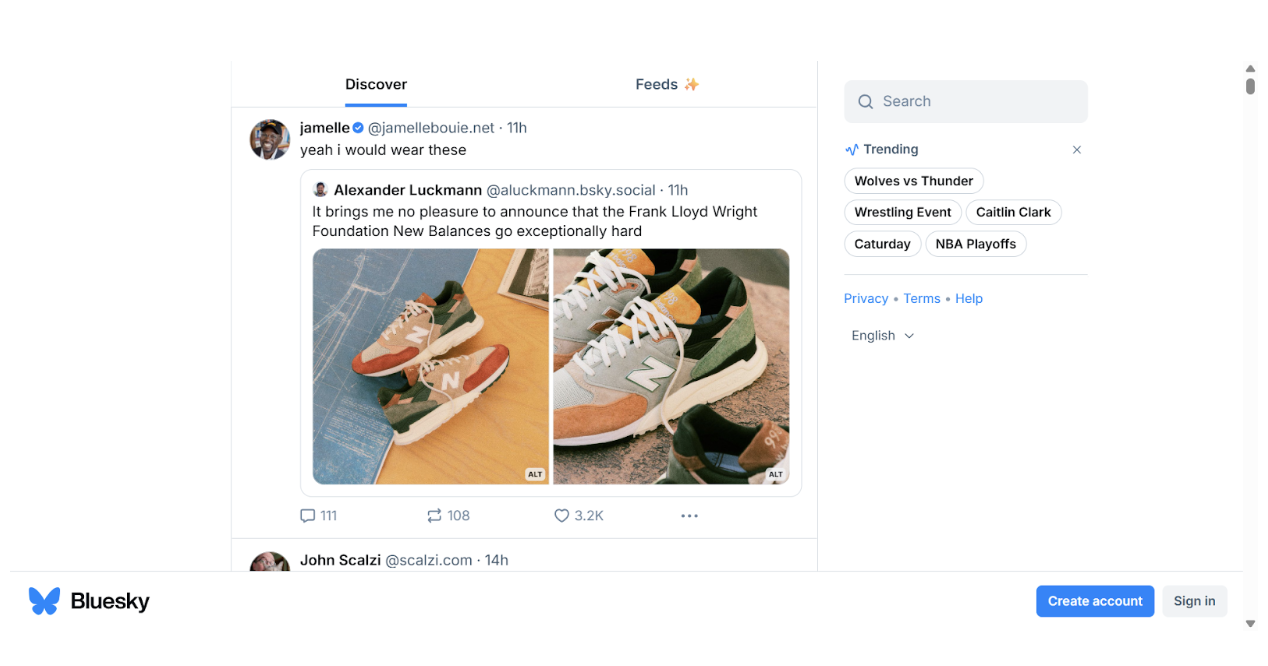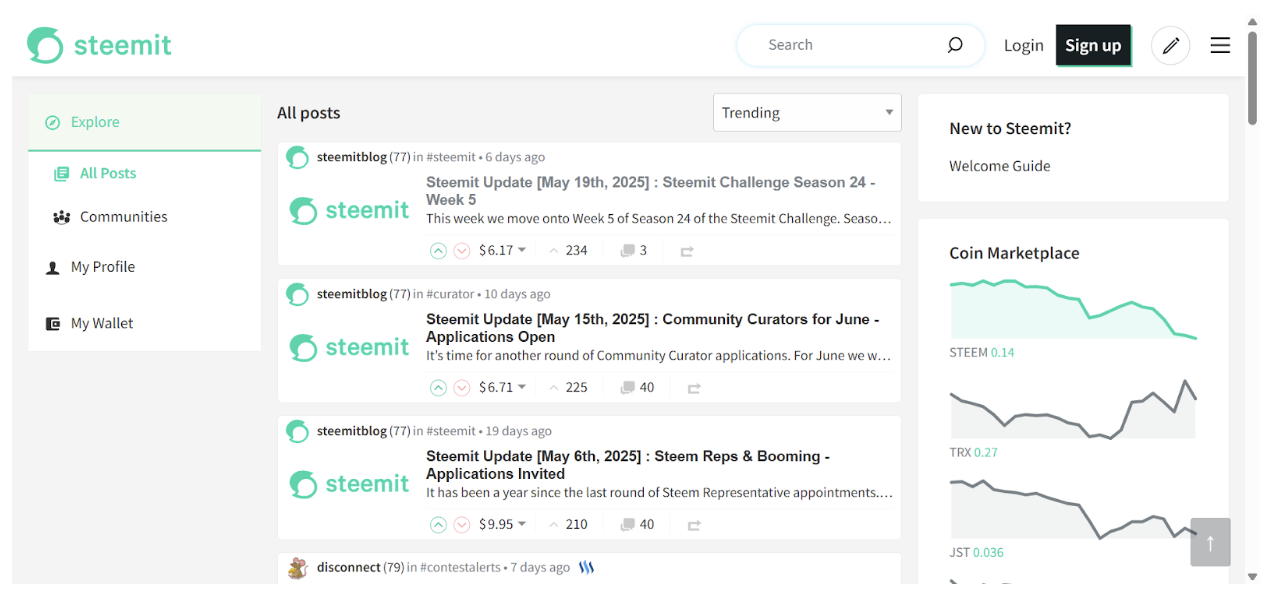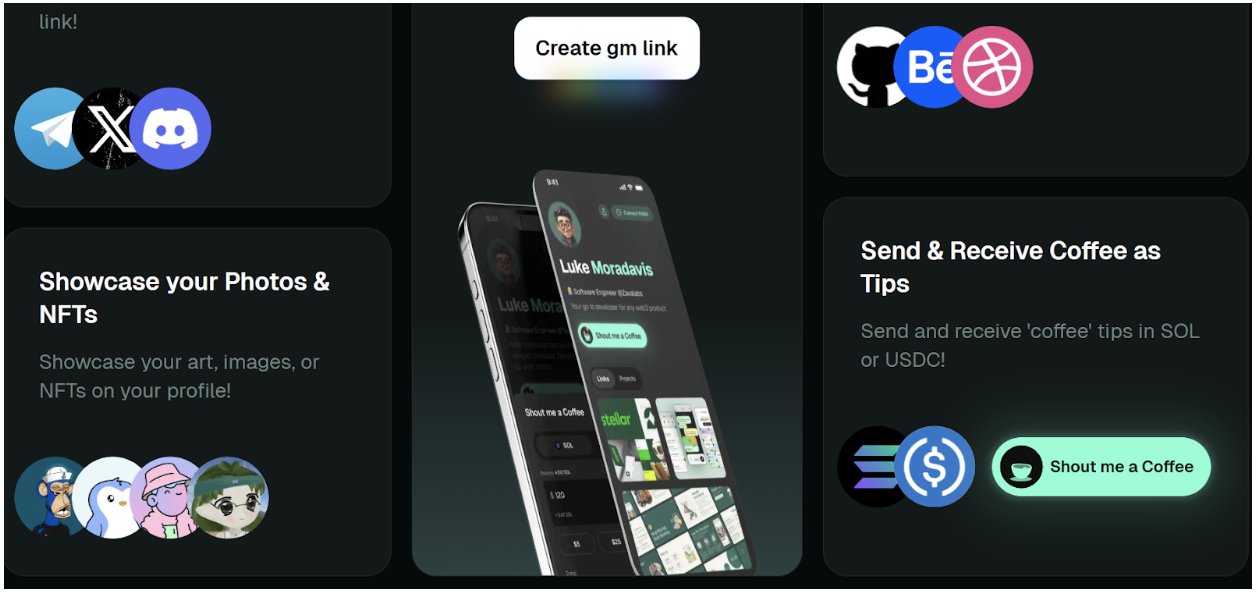If you’re posting on major social media platforms like Instagram, TikTok, and Facebook, you’re up against a few major beasts:
- Endless competition.
- Ruthless changing algorithms.
- And billionaire tech owners who decide your fate on their apps.
That’s why you’ve probably been wondering if there are other social media platforms where you could have more traction and ownership. Spoiler alert … there are. They’re called decentralized social media platforms.
If you’re looking to diversify your income as a content creator and have more control over what you put into the world, keep reading. In this guide, we’ll walk you through what decentralized social media is, why users are increasingly interested in it, and what you should do about it as a content creator.
Let’s take a look!
What is decentralized social media?
Unlike traditional social media platforms, decentralized social media runs on networks that no single company controls. Or “decentralized networks”. Instead of one tech giant owning your data, control is shared across users, servers, or blockchain systems.
Let’s say you sell black suits. On big social platforms, you’re stuck playing by their rules and chasing likes. However, with newer, more open platforms, you can communicate directly with your audience, cultivate a loyal following, and establish your brand in the way you envision.
This gives you more privacy, more say in how platforms work, and less risk of sudden bans or algorithm changes.
We’ll share some examples of decentralized platforms in a bit.
Why are social media users interested in decentralized social media platforms?
Interest in decentralized social media has jumped 6,500% in the past five years because users are growing frustrated with platforms like Facebook, X, and Instagram.
Why?
User autonomy.
Social media users want more freedom and privacy when connecting online.
And Jay Graber, the CEO of Bluesky (and self-proclaimed anti-authoritarian), says she’s ready for users to have that control.
“Elon, if he wanted to, could just delete the whole X timeline — just do these totally arbitrary things,” Jay says. “I think this self-styled tech-monarch thing is worth questioning. Do we want to live in that world?”
While there are endless benefits of showing up on decentralized social media platforms, we’ve listed some of the top ones (like user privacy and a more personalized online environment) below.
Benefits of decentralized social media
Some benefits of using decentralized social media platforms include:
- Open-source tech means the platform’s workings are transparent and open to improvement. (You get a say on how this goes!)
- You keep your privacy because no single company controls your data.
- You can easily move your profile or content between platforms.
- There is a lower chance of being banned or censored without warning.
- No sneaky algorithms or non-stop ads tracking your every move.
- Users help shape platform rules and features.
That said, let’s take a quick look at some popular decentralized platforms you might want to try.
Top 3 decentralized social media platforms in 2025
Decentralized platforms don’t have billions of users to market to, unlike Facebook or Instagram.
But you won’t have to worry about centralized control or algorithmic manipulation. (Both of which play a major role in how often your content gets seen, who sees it, and how much money you can make off of it.)
To get an idea of what user ownership looks like, keep reading.
Here are some of the most popular decentralized social media platforms in 2025 you might want to check out:
Bluesky
Bluesky has over 33 million users and operates like a decentralized version of X (formerly Twitter). It’s a social networking platform where people post short updates, share links, photos, and videos, and engage in conversations.
Unlike traditional platforms, Bluesky lets users control their data and choose how their feed is organized using open protocols. It also supports community moderation, so users help decide what content stays or goes. (Such as harmful content or misinformation.)
Bluesky has played a critical role in setting the standard for other decentralized technologies.
Mastadon
Mastodon has over 10 million registered users and runs on a federated model.
Instead of a single central site, it’s composed of thousands of independently operated servers (called “instances”) that are all interconnected. Each server hosts its own community with its own rules, but users can still follow and talk to people across the network.
It’s often compared to X, with timelines, reposts, and replies — but with more control and no ads. Users pick the server they want to join or create their own.
(Even Meta started integrating Threads with Mastodon’s decentralized protocol to test the waters.)
Steemit
Steemit is a social media platform built on the Steem blockchain where users earn cryptocurrency for posting, voting, and curating content.
Instead of relying on ads or selling user data, Steemit rewards creators and community members with Steem tokens. The more upvotes a post gets, the more the author (and the voters) can earn.
It looks and feels like a blogging platform, with long-form posts, comment threads, and active niche communities around topics like crypto, photography, health, and writing.
Behind the scenes, all of this activity is recorded on the blockchain, so content can’t be silently deleted or censored, and transactions are public.
What decentralized social media means for content creators (+ 6 tips!)
As a content creator, decentralized platforms offer you more freedom, ownership, and direct connection with your audience. (Without relying on algorithms or ad revenue like with centralized platforms.)
You can build a community-powered brand and earn directly from your content without a middleman stopping you or deciding how much you deserve.
Here’s how to make the most of decentralized social media as a content creator:
1. Take your audience wherever you go
Choose decentralized platforms that support portable identities like AT Protocol or ActivityPub.
This helps you grow your following once and bring them with you across compatible apps like Bluesky or Mastodon.
Imagine being a contractor with an established client book, only to lose them because the platform you used went under. With decentralized identity support, it’s like having your own client list saved in reliable job management software — you keep your people and your work organized, no matter where you go.
*Pro-Tip: Use profile migration tools to stay visible as you evolve.
2. Use your voice to shape the platform
Contribute directly to the platform’s evolution. Join governance chats, vote on proposals, and co-design features that make life easier for creators.
3. Create community experiences, not just content
Run live Q&As, drop exclusive content to token holders, or poll your audience to choose your next project.
Platforms like Bonfire or gm.xyz let you blend social interaction with ownership perks. 👇
4. Develop a signature brand that sticks
Nail down your voice, visuals, and message so you’re instantly recognizable across platforms.
Use a consistent handle, craft a simple bio that sparks curiosity, and keep your visuals on point. (Consider creating a content series that your followers can anticipate each week.)
5. Diversify across platforms to stay visible
Post across multiple decentralized platforms using cross-posting tools to stay consistent.
Link all your profiles from a single, clean landing page, making them easy to find. Repurpose your long-form content into short, concise bursts to match each platform’s unique vibe.
*Pro-Tip: If you’re a creator, you still need a presence on big platforms, so continue to get more real Instagram followers and audiences on other major channels, too. Smart creators are using both social media giants for reach and decentralized alternatives for freedom and stronger fan connections.
➜ A multi-platform presence means you’re always discoverable.
6. Set up direct payments and rewards
Connect your wallet and activate tipping, NFT sales, or token-gated content on platforms like Steemit, Mirror, or Lens. Offer early access, behind-the-scenes drops, or premium content that fans can unlock with crypto. (Similar to Patreon, but decentralized)
Wrap up
Decentralized social media gives you more user control, direct ways to earn, and deeper audience connections. It’s a shift from renting space on large platforms to owning your brand, content, and community.
If you’re a creator, now’s the time to explore how this decentralized model can help you grow on your terms.
Remember to:
- Take your audience wherever you go
- Use your voice to shape the platform
- Create community experiences, not just content
- Develop a signature brand that sticks
- Build across platforms and stay visible
- Set up direct payments and rewards
Which one of these tips will you implement first? 😀
PS: Want to nerd out on more content for tech enthusiasts and content creators? Peruse guides and resources at Noupe now.
FAQs
How does decentralized social media benefit content creators?
Creators gain more control over their content and audience, earn directly through crypto rewards or NFTs, and engage with tighter communities without relying on traditional ad-based revenue. They can also create a more personalized user experience to build up brand loyalty.
Can I take my followers with me if I switch platforms?
Yes. Many decentralized platforms use protocols that let you move your profile, content, and followers across compatible apps, so you’re not locked in.
Is decentralized social media more private?
Generally, yes. Because no central company controls your data, there’s less risk of misuse or unwanted tracking. Your content is still public or shared across a network, though.
Are there risks with decentralized social media?
Since it’s newer technology, decentralized platforms can evolve quickly, so it’s smart to spread your presence across multiple networks to stay flexible.
How do I get started with decentralized social media?
Try setting up profiles on a few platforms, connect them through a clean landing page, and experiment with different ways to engage your community and monetize your work. Make sure to set up direct payments and rewards so you can get paid.
Author Bio:
Ioana Wilkinson
Ioana is a business strategist and content writer for B2B tech and SaaS brands. She also helps aspiring entrepreneurs build remote businesses. Born in Transylvania and raised in Texas, Ioana has been living the digital nomad life since 2016. When she’s not writing, you can catch her snorkeling, exploring, or enjoying a café con leche in Barcelona!












